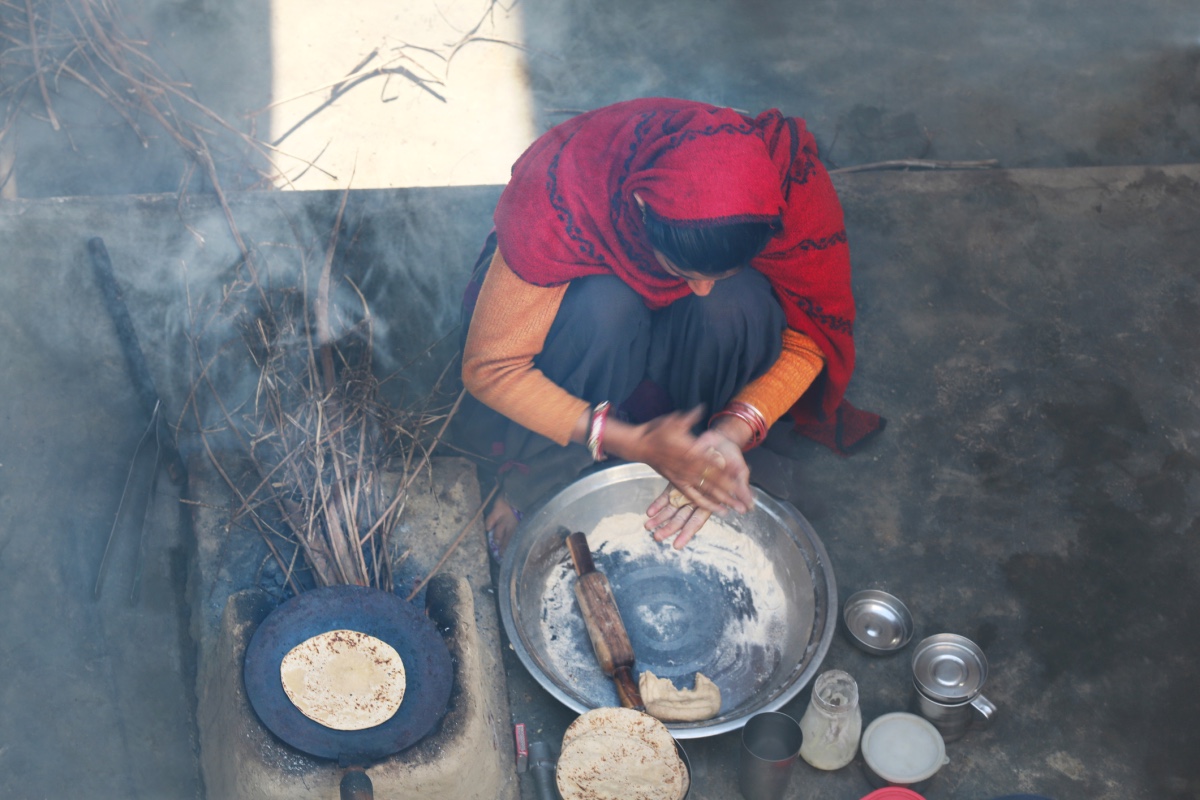Unsustainable harvest of fuelwood is a major driver of forest degradation and impacts adversely more than 30 million ha of forests. The source of energy for domestic and commercial use in rural and semi-urban areas is largely fuelwood which contributes to more than 93 per cent of Greenhouse Gas emissions from the forestry sector in India. Inadequate access to clean and affordable energy sources and large-scale use of solid fuels are the primary reasons behind the low quality of life in most developing countries, including India. Clean cooking also helps to address energy poverty and ensure sustainable energy security for billions.
The world may not be able to ensure universal access to affordable, reliable and modern energy services by 2030 as per Sustainable Development Goals (SDG). A recent report on global and regional forecasts on energy transition says that India, Southeast Asia and sub-Saharan Africa will not meet the SDG target 7.1, thus preventing the world from moving towards a cleaner future.
During the past few decades, India has experienced many changes in its energy consumption patterns – both in qualitative and quantitative terms. This is due to the natural increase based on population growth and the increase of economic activity vis- à-vis development. But all initiatives seem to be half-hearted, and reports tell only half-truths. For the first three decades, the Union government ran and supported the initiative to build solid fuel-based stoves with lesser emissions.
In 2009, the government launched the National Biomass Cookstoves Initiative (NBCT), which has approved 17 cook-stove models for domestic use. But their efficacy in reducing indoor air pollution is yet to be assessed.
While nearly half of India’s households use solid fuels for cooking, India planned to ensure 80 million households would get LPG connections by 2020 under the flagship scheme entitled Pradhan Mantri Ujjwala Yojana (PMUJ), launched on 1 May 2016. Targeted beneficiaries are adult women of BPL families.
On 1 August 2018, the Union Minister for Petroleum and Natural Gas, in a written reply to a question, reported to Parliament that nearly 80 per cent of PMUY beneficiaries who have completed one year of connection, come back for a refill. This means that at least 10 million (20 per cent) have not come for a refill. Of even the 40 million who have come to refill for the second time, it is not known how many did so a third time, or if they are using LPG for cooking regularly. The Economy Survey 2018 stated that only 79 per cent of beneficiaries came to refill the cylinder.

A paper published in The Lancet Planetary Health in December 2018 appreciated the scheme saying that it has helped bring down indoor pollution in many parts of the country. Mr Tushar K Joshi, advisor, environmental health, Ministry of Environment, Forest and Climate Change, on being asked if there was any record of 50-60 per cent of people going for refills under the scheme replied in the negative.
Hence, if beneficiaries are not refilling the cylinders, it is misleading to say that the scheme has been a success. Contrary to the government claims, LPG connection under PMUY for the poor is not free and most beneficiaries are so poor that they have not returned for a refill. Initially, the beneficiaries were asked to pay Rs. 1600 and when they could not, they were given a loan by the OMC. The amount was deducted from the subsidy when the beneficiaries got their cylinder refilled. However, the affordability of cooking fuels remains a major bottleneck.
Other factors for not using LPG are: (i) no distributors in the region; (ii) logistically difficult terrain for LPG procurement; (iii) process of getting LPG connection; (iv) unwillingness of the community to shift to LPG.
Kerosene is often advocated as a cleaner alternative to solid fuels, biomass and coal, for cooking. Kerosene lamps are used frequently when electricity is unavailable. As to the harmful effects of kerosene, there are few studies. Designs and, above all, results are inconsistent. Kerosene cooking is widespread in many developing countries.
One driver of this has been the controversial use of government subsidies to secure kerosene availability, mainly for cooking, by the poor population. It is viewed as a step up the energy ladder from solid fuels, for cooking can provide benefits to poor households in terms of time savings and convenience.
Although the sustainable development goals 7 (SDG7) target access to affordable, reliable, sustainable and modern energy, there are three billion people worldwide who use solid fuels for cooking purposes.
As per a report by the IEA, 2019, in India, around 49 per cent of people have access to clean cooking fuels (CCF). While 688 million people are deprived of CCF access, 681 million people still rely on the traditional use of biomass. If this trend continues, 580 million of India’s population will depend upon solid fuels for cooking by 2030.
This means that India will not meet the SDGs target by 2030. About 40 per cent of Indians will remain exposed to the harmful indoor air pollution (IAP) caused by traditional cooking fuels. A recent study by Mottaleb and Rahut (2021) has indicated that around 15 per cent of total energy expenditure occurred on firewood even in urban families.
Energy is the lifeline of a nation. Children have the right to mother’s milk; similarly, people have the right to consume natural resources obtained from their own motherland or from friendly countries. It is not only immoral but also uneconomic for any government to increase its revenue by imposing taxes of any kind on natural resources, especially oil and coal.
In conclusion, considering the widespread use of subsidised kerosene in the developing world, kerosene may be adopted as a household fuel to get rid of the double burdens faced by poor Indian women. In the words of Pandit Jawaharlal Nehru: “You can tell the condition of a nation by looking at the status of its women.”The new challenges demand a new paradigm for the energy policy. The time to act is now.













